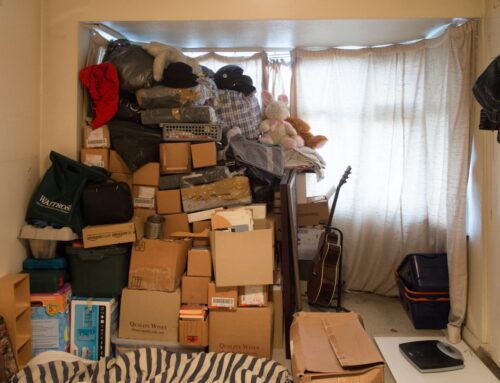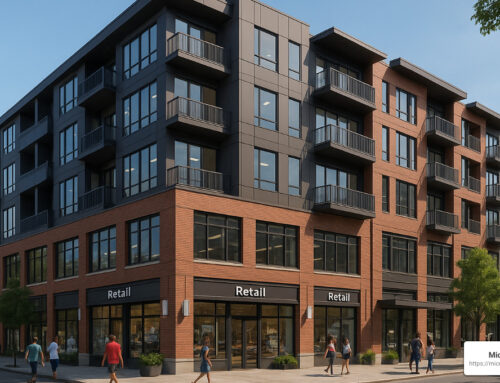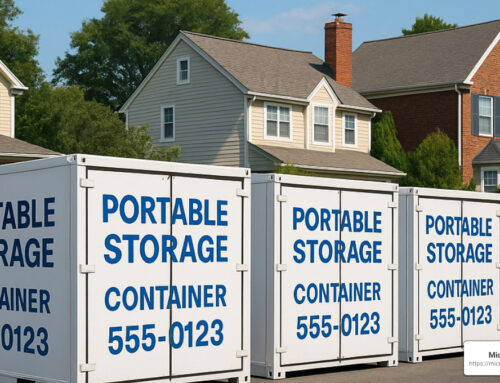Finding Temporary Storage Solutions That Make Sense
When life throws you a space challenge, short term storage container rental can be your flexible friend. I’ve seen countless clients breathe a sigh of relief when they find this convenient option that bridges their storage gaps without locking them into lengthy contracts.
Looking for the right provider? Here’s a straightforward comparison of the market options:
| Provider | Min. Rental Period | Starting Price | Size Options | Key Benefit |
|---|---|---|---|---|
| Provider A | 1 month | $90-$336 | 8′, 12′, 16′ | Lowest damage claim rate |
| Provider B | 30 days | $70-$110 | 257 cu. ft. | Most affordable |
| Provider C | 30 days | Save up to 50% on first month | 8′, 12′, 16′ | All-steel construction |
| Provider D | 30 days | Call for quote | 12′, 16′, 20′ | Largest container option |
What makes short term storage container rental so appealing is the door-to-door service. Imagine having a storage unit delivered right to your driveway! You can pack at your own pace—no rushing, no rental truck driving, no multiple trips across town. Once loaded, you can keep the container right where it is or have it whisked away to a secure facility until you need your belongings again.
I recently helped a family who was renovating their kitchen and needed somewhere to store their appliances and cabinets temporarily. The relief on their faces when they realized they could load everything once and have it sitting in their driveway for easy access was priceless.
“Storage with portable containers was easy, convenient, and more affordable than self-storage units without the hassle of transporting belongings across town,” shares Elizabeth S., whose experience mirrors what I’ve heard from many clients.
Hi there! I’m Sam Zoldock, a commercial real estate investment professional who’s evaluated dozens of short term storage container rental options for clients caught in transition periods. Whether they’re renovating office spaces or managing inventory between locations, I’ve helped businesses find cost-effective temporary storage that keeps operations running smoothly during times of change.
If you’re exploring beyond container rentals, you might also consider these related options for your temporary storage needs:
– short-term warehouse rental for larger commercial requirements
– short term storage unit rental for traditional self-storage alternatives
The beauty of portable storage containers is their versatility. They’re perfect for home renovations, managing a move when closing dates don’t align, seasonal inventory storage, or simply decluttering your space without committing to permanent solutions. The ground-level loading means no ramps to steer—just wheel or carry items straight in without breaking your back on steep inclines.
Understanding Short Term Storage Container Rental
Short term storage container rental brings the storage directly to your doorstep instead of you hauling everything across town. These portable units operate on flexible month-to-month leases, with most companies including the first 30 days in their initial price quote.
The beauty lies in the simplicity: you never have to drive a moving truck or make exhausting trips to a storage facility. The container arrives at your home, you fill it at your own relaxed pace, secure it with your personal lock, and then decide whether it stays in your driveway or gets transported to a secure facility.
Alice W. recently shared her experience: “Everything arrived in one piece and exactly as packed. From the person I booked everything with on the phone to the delivery driver to the person who picked up the empty container, everyone was lovely and incredibly professional.”
These weather-resistant steel containers adapt to life’s unpredictable moments. Whether you’re knocking down walls during a home renovation, caught between closing dates on properties, tackling a seasonal decluttering project, sorting through inherited belongings, or managing overflow business inventory – these containers provide ground-level loading with no stairs or ramps to steer when moving heavy furniture.
Why Choose a Short Term Storage Container Rental?
The convenience factor of short term storage container rental simply can’t be beat. As Matt K. from Kissimmee puts it: “The convenience was amazing. It provided us onsite storage for staging our house for sale as well as storage and transportation to our new home.”
You’ll never need to white-knuckle it behind the wheel of an unfamiliar moving truck or worry about gas costs and mileage fees. Load at your leisure over several weeks rather than rushing through a one-day truck rental. With on-site storage, your holiday decorations, extra furniture, or business equipment remain accessible whenever you need them.
The safety record speaks volumes too – portable storage providers typically report much lower damage claims than the moving industry average, suggesting your cherished belongings face fewer bumps and bruises in transit.
Heather S. from Erie, CO captures the sentiment perfectly: “What I liked best is the flexibility and the kind personalities of the men who did the deliveries and pickups. They were fabulous and I love portable storage.”
Short Term Storage Container Rental vs Self-Storage Units
When weighing short term storage container rental against traditional self-storage options, several important distinctions emerge that might influence your decision.
Traditional storage units remain fixed in one location, requiring you to handle all transportation logistics. Portable containers, however, can follow your journey – from your current home to a storage facility to your new location – without you repacking a single box.
While monthly rental fees might appear comparable at first glance, the hidden costs of self-storage add up quickly. Factor in truck rental fees, multiple trips across town, and fuel costs, and container rentals often prove more economical in the long run.
Access convenience varies dramatically between options. On-site container storage gives you 24/7 access to your belongings right in your driveway. Even with off-site container storage, many providers offer scheduled access, though typically with more limited hours than self-storage facilities.
The ground-level loading of portable containers eliminates the challenge of navigating narrow hallways, temperamental elevators, or steep stairs common in self-storage buildings. Plus, you maintain complete security control by using your own lock and key.
Mary S. from Wharton, NJ sums it up nicely: “On-site storage was a life saver. I would recommend it and use this solution again.”
Container Sizes, Types & Selection Guide
Finding that “just right” container size is a bit like Goldilocks trying porridge—too small and you’ll be playing Tetris with your belongings, too large and you’re paying for air. Let’s make your short term storage container rental experience more satisfying by exploring your options.
Standard Residential Containers
The cozy 8-foot container packs a surprising punch with its 404 cubic feet of space. Perfect for apartment dwellers or minimalists, these containers hold about 4,000 pounds—enough for a studio’s worth of furniture or that spare room you’re finally decluttering.
Moving up to the medium 12-footer, you’ll enjoy 620 cubic feet of breathing room for your belongings. With a 6,000-pound capacity, these containers comfortably fit a 1-bedroom apartment’s contents, making them popular choices for young professionals or couples.
The large 16-foot container offers a generous 830 cubic feet of space, still maintaining that 6,000-pound weight limit. This size hits the sweet spot for most families, easily accommodating 2-3 bedroom homes without overwhelming your driveway.
For those with more substantial needs, some providers also offer extra-large 20-foot containers that can handle 4-6 rooms of furniture and belongings—ideal when you’re moving the entire household or renovating multiple spaces at once.
Commercial Containers
Businesses often need more substantial solutions. The standard 20-foot container delivers approximately 1,150 cubic feet of storage—perfect for inventory overflow or equipment storage between projects.
Need more headroom? The 20-foot high cube maintains the same footprint but stands 9.5 feet tall (versus the standard 8.5 feet), giving you valuable vertical space for taller items or additional stacking room.
For major operations, the standard 40-foot container offers a cavernous 2,400 cubic feet—enough to store substantial commercial equipment or merchandise.
The 40-foot high cube takes things even further with around 2,700 cubic feet of storage potential. These giants are typically used for major commercial projects or large-scale moves.
Most containers feature weather-resistant steel construction, though some providers use wooden containers with weatherproof coverings. Steel provides superior security and protection from the elements, while wooden options might be lighter and easier to transport. Many containers include welded lock boxes that shield your padlock from bolt cutters or tampering—particularly valuable when containers sit in less-secure locations.
| Container Size | Cubic Footage | Weight Capacity | Typical Home Size | Equivalent Storage Unit |
|---|---|---|---|---|
| 8-foot | 404 cu. ft. | Up to 4,000 lbs | Studio/1 room | 5’x10′ unit |
| 12-foot | 620 cu. ft. | Up to 6,000 lbs | 1-2 bedroom | 10’x10′ unit |
| 16-foot | 830 cu. ft. | Up to 6,000 lbs | 2-3 bedroom | 10’x15′ unit |
| 20-foot | 1,150 cu. ft. | Varies | 3-4 bedroom | 10’x20′ unit |
Picking the Right Size for Your Rooms
Choosing the perfect container isn’t just about cubic footage—it’s about understanding what actually fits inside. Let me break it down by living situation:
For a studio or dorm room, that 8-foot container will typically accommodate your queen mattress and bed frame, a modest loveseat, several boxes of clothes and kitchenware, and those compact appliances you’ve accumulated. It’s cozy but sufficient for minimal lifestyles.
Moving up to a 1-2 bedroom home? The 12-foot container becomes your friend. You’ll fit your living room set, dining table with chairs, a couple of bedroom sets, kitchen appliances, and those dozens of boxes that seem to multiply overnight during packing.
Families in 3-4 bedroom homes should look to the 16-foot container. This accommodates multiple bedroom sets, sectional sofas, dining room furniture, major appliances, and the surprising amount of “stuff” that accumulates in family homes. As JoBeth W. shared after her recent move: “I can’t say enough good things about this company. So helpful, truck drivers very kind and thoughtful.” The right size combined with helpful service makes all the difference.
For office overflow or business inventory, the larger 20-foot containers shine. They’ll house filing cabinets, desks and chairs, seasonal inventory, equipment, and those marketing materials you need but don’t access daily. Many businesses find these containers perfect for managing inventory fluctuations without committing to larger permanent spaces.
Specialty Add-Ons That Boost Security & Organization
Your short term storage container rental experience can be dramatically improved with smart add-ons that transform a basic box into an organized storage solution.
Shelving and racking systems turn wasted vertical space into organized storage zones. Instead of stacking boxes precariously or digging through piles to find that one item, these pre-installed systems keep everything visible and accessible. Businesses love these for inventory management, contractors use them for organizing tools and materials, and homeowners appreciate being able to quickly locate holiday decorations or seasonal clothing without unpacking everything.
For temperature-sensitive items, climate control options are worth every penny. While not all containers themselves are climate-controlled, many providers offer climate-controlled facilities for off-site storage. This protection is crucial for electronics that can be damaged by temperature extremes, wooden furniture that might warp, musical instruments that need stable humidity, precious artwork, photographs, and important documents that shouldn’t be subjected to moisture or heat fluctuations.
When your container stays on-site, solar lighting systems provide convenient illumination without requiring electrical connections. These simple add-ons make early morning or evening access much more practical, improve security through visibility, and are especially valuable for containers placed in remote locations without easy access to power.
Additional security improvements offer peace of mind for valuable contents. These might include reinforced doors that resist prying, tamper-resistant lock boxes that protect your padlock from bolt cutters, alarm systems or security cameras for monitoring, and high-security locks that provide greater protection than standard padlocks. For longer-term storage or particularly valuable items, these security upgrades are well worth considering.
The right container with thoughtfully chosen add-ons transforms your storage experience from a stressful necessity into a convenient solution that truly serves your needs.
Practical Logistics: Pricing, Delivery & Access
Let’s talk dollars and cents – because nobody likes surprise bills when it comes to short term storage container rental. Understanding what you’re paying for helps you budget properly and possibly save some money along the way.
The cost structure is pretty straightforward once you break it down. For the container itself, you’re looking at monthly rates that vary by size: smaller 8-foot containers typically run $70-$110 per month, while mid-sized 12-footers cost $80-$150 monthly. If you need more space, large 16-foot containers range from $100-$200, and those extra-roomy 20-footers will set you back $120-$250 monthly.
But that’s just the container rental. You’ll also pay for delivery and pickup – usually between $99-$195 each way, depending on how far you are from the provider’s facility. And if you need your container moved from one location to another, transportation fees vary with distance. A local move under 30 miles might cost $90-$336, while cross-country treks can reach $1,447-$2,079.
“I was pleasantly surprised that the total cost ended up being exactly what was quoted,” shares Marissa T. from Denver. “No hidden fees or unexpected charges when the final bill came.”
Many providers offer optional insurance coverage ($18-$40 monthly) to protect your belongings, and I’d recommend considering it for valuable items. According to research from Bob Vila, insurance costs are typically worth the peace of mind they provide, especially for longer storage periods.
Cost Factors You Can Control
The good news? You have quite a bit of control over your final bill. Rental duration is the most obvious factor – the shorter you need the container, the less you’ll pay. Most companies include the first 30 days in their initial quote, so planning your project timeline carefully can save you from paying for an extra month.
Container size and quantity matter too. It’s tempting to err on the side of caution and rent a larger container, but measuring your items beforehand can prevent paying for space you don’t need. Some companies even let you order multiple containers but only pay for what you actually use – a nice flexibility option.
If you’re handy with large vehicles, self-delivery options might save you money. Some providers offer discounts if you pick up and return the container yourself. This works best for local storage and when you have access to appropriate transportation.
Finally, consider facility loading versus on-site loading. Loading your container at the provider’s facility rather than having it delivered to your home cuts out delivery fees, though you lose the convenience of packing at your own place.
Saving Money on Short Term Storage Container Rental
Want to stretch your dollar further? Try booking during off-peak seasons – typically fall and winter months or mid-month periods when demand is lower. Summer and month-ends are prime moving times, so rates tend to be higher.
Optimal placement saves money too. Before your container arrives, ensure you have a level spot with adequate clearance to avoid repositioning fees. And don’t be afraid to negotiate – many providers offer promotional discounts, particularly for first-time customers. I’ve seen savings of up to 50% off the first month’s rental with online booking and promo codes.
If you’re moving along with family or friends, consider sharing a container. A single larger unit often costs less than multiple smaller ones. And don’t underestimate the power of efficient packing – disassembling furniture, filling drawers with smaller items, and using vacuum bags for clothing can help you fit more into a smaller container.
“We managed to fit our entire three-bedroom house into one 16-foot container by taking apart the beds and using every inch of space,” says Michael R. from Charlotte. “Saved us from renting a second container.”
How Delivery, Pick-Up & Transportation Work
The logistics of short term storage container rental are designed to be hassle-free. Most containers arrive via specialized tilt-bed trucks that lower your unit directly onto your property. For this to work smoothly, you’ll need a relatively level surface with adequate clearance – typically about 75 feet of straight clearance for a 20-foot container and about 12 feet of width.
Most providers offer specific delivery time windows, and many provide contactless service. You don’t necessarily need to be present when they drop off the container, though being available to direct placement is always helpful. If you live in an HOA-governed community, you might need permission before scheduling delivery.
After loading your container, you have options. You can keep it on your property for immediate access, have it transported to the provider’s secure storage facility, or move it directly to a new location. If your container is stored at a facility, access policies vary – some offer 24/7 access with advance notice, while others maintain specific business hours. Most require at least 24-48 hours’ notice to retrieve items from storage.
“The driver called 30 minutes before arrival, placed the container exactly where I needed it, and was incredibly professional,” remembers Jennifer K. from Austin. “When I was ready for pickup, the process was just as smooth.”
The beauty of short term storage container rental is its flexibility. Whether you’re renovating, moving, or just need extra space for a while, these containers adapt to your timeline and needs. And when you’re comparing container options, don’t forget to check out short-term warehouse rental alternatives that might offer even more flexibility for certain situations.
Frequently Asked Questions about Short Term Storage Container Rental
How secure and weather-proof are these containers?
When you’re trusting your belongings to a short term storage container rental, security and weather protection naturally top your list of concerns. The good news? Most containers are built tough, with all-steel construction and weather-resistant seals designed to keep your treasures safe from whatever Mother Nature throws their way.
Many storage container providers describe their containers as “steel-framed and weather-resistant,” while others emphasize their “all-steel, weatherproof” design that fights moisture absorption and keeps mold at bay. I’ve seen these containers withstand impressive weather conditions while keeping contents dry and secure.
Most containers include thoughtful security features like reinforced doors and those clever welded lock boxes that shield your padlock from bolt cutters and tampering. It’s a simple but effective deterrent against opportunistic theft.
If your container gets stored at a provider’s facility, you’ll typically enjoy additional layers of protection: 24/7 video surveillance, gated access points, on-site security personnel, and of course, your individual container lock. It’s like a security onion with multiple protective layers!
Weather resistance does vary between providers. Steel containers generally outperform wooden alternatives when it comes to moisture protection, temperature fluctuations, and keeping unwanted critters out. Many containers are designed to sit several inches above ground level, preventing water damage during heavy downpours.
One important note: standard containers aren’t climate-controlled. If you’re storing antiques, electronics, musical instruments or other temperature-sensitive items, ask about climate-controlled storage facilities or consider specialized options like refrigerated units for extreme requirements. Your vintage vinyl collection will thank you!
Can I access my items while the container is stored off-site?
“I suddenly realized I left my tax documents in the storage container!” Don’t worry, this happens more often than you’d think, and most providers have systems in place for retrieval.
Access policies vary by company, but the typical process looks something like this:
Contact the facility 24-48 hours before you need access, schedule an appointment during their business hours, bring your ID when you arrive, and use your personal lock and key to open your specific container. It’s straightforward but requires a bit of planning ahead.
Some facilities offer weekend or extended hours access, though this varies by location. Most require staff members to be present when customers visit their containers, so those spontaneous midnight runs to grab something aren’t usually possible.
Mary S. from Wharton, NJ captured it perfectly: “On-site storage was a life saver.” If you anticipate needing frequent access to your stored items, keeping the container on your property might be your best bet. On-site storage gives you that 24/7 access without scheduling constraints – perfect for ongoing home renovation projects or business inventory management.
Are there hidden fees I should watch for?
Even with reputable short term storage container rental companies, it pays to read the fine print. While most aren’t trying to pull a fast one, several charges might not be immediately obvious when you’re getting that initial quote.
Most providers include the first 30 days in their initial price, with monthly billing thereafter. But be crystal clear about exactly when those billing cycles begin and end. Does the clock start ticking when you order, when it’s delivered, or when it’s picked up? These details matter for your budget.
Changed your mind about where you want the container placed? Those redelivery or repositioning charges typically run $75-$150. A bit steep for a 10-foot adjustment, but it requires bringing back the specialized delivery equipment.
Watch for promotional rates that seem too good to be true – they might be just for the first month or two, with prices jumping significantly for extended storage. Always ask: “What will my regular rate be after any promotions end?”
Insurance is typically optional (though highly recommended), but some providers require minimum coverage for certain types of storage or transportation. Better to know these requirements upfront than be surprised later.
Last-minute schedule changes can be costly too. Most companies require 7-day notice for delivery date changes without penalties. Life happens, but try to lock in your dates when possible.
And finally, document your container’s condition upon delivery with photos. Containers returned with damage beyond normal wear and tear might result in repair charges that could have been disputed with proper documentation.
My best advice? Request a comprehensive written quote that includes all potential charges before signing anything. A transparent provider will be happy to spell everything out – if they’re not, that might tell you something important about their business practices.
Conclusion
Let’s wrap this up! After exploring all the ins and outs of short term storage container rental, you’re now equipped to make a choice that works for your specific situation. Whether you’re renovating your kitchen, in between homes, or just need to declutter, these portable solutions can be a real lifesaver during life’s transitions.
Thinking about the right container? Start by being honest about how much stuff you actually have. We all tend to underestimate, but sizing up correctly saves both headaches and money. 8-foot container might seem adequate until you realize your sectional sofa isn’t going to magically shrink!
Location is another big consideration. Having the container right in your driveway means midnight access when you suddenly remember you need your winter boots. But if space is tight or HOA rules are strict, facility storage might be your best bet.
Be realistic about your timeline too. What starts as “just a month or two” can sometimes stretch longer when projects delay (as they often do!). Many customers find themselves extending rentals, so build some buffer into your budget planning.
Security needs vary widely depending on what you’re storing. Family photo albums and your grandmother’s china deserve better protection than your old college textbooks. If you’re storing valuables, those reinforced lock boxes and steel construction are worth every penny.
Speaking of pennies, compare total costs carefully. That promotional rate might look tempting until you add delivery fees, insurance, and pick-up charges. A complete quote from each provider helps you avoid that “wait, what?” moment when the final bill arrives.
For businesses dealing with temporary space challenges, it’s worth looking beyond basic containers. MicroFlex™ LLC offers an interesting alternative with their flexible multi-function spaces in Birmingham, Auburn-Opelika, Huntsville, and Hoover, Alabama. These adaptable spaces combine warehouse, office, storage, and showroom features—often providing amenities that basic containers simply can’t match.
What makes their approach different is the ability to scale your space as needed with flexible lease terms that work with your timeline, not against it. For businesses requiring climate control, professional facilities, or a more polished appearance for client visits, these hybrid spaces offer significantly more functionality than a basic steel box.
The decision ultimately comes down to matching the service to your specific needs. A simple home renovation might be perfectly served by a standard short term storage container rental, while a growing business might benefit from a more comprehensive space solution.
By understanding all your options, from basic containers to flexible commercial spaces, you can make a choice that provides exactly what you need without paying for features you won’t use. And isn’t that the whole point of temporary solutions? They should solve your immediate problem without creating new ones for your wallet.
For more information about flexible spaces that go beyond basic storage containers, explore how adaptable commercial solutions might better serve your short-term business needs.
















